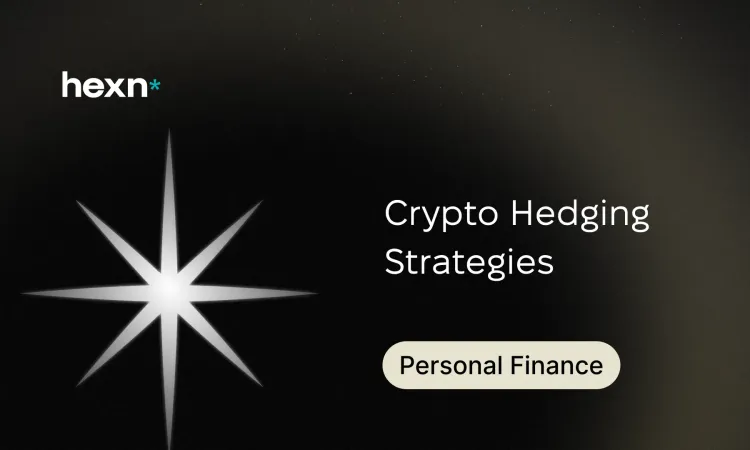Crypto Hedging Strategies
What Is Hedging?
Hedging is a risk management approach that aims to reduce the impact of adverse price moves on an investment. For crypto holders and traders, hedging can help cushion volatile swings, protect realized gains, or limit downside exposure without fully exiting a position. Understanding available hedges and their trade-offs is essential for anyone who wants to manage portfolio risk deliberately.
Quick Summary
- Hedging is used to offset potential losses rather than to generate profit.
- Common crypto hedging instruments include futures, options, perpetual contracts, stablecoins, and short positions.
- Every hedge has costs and risks, including counterparty exposure, fees, limited upside, and regulatory or liquidity concerns.
How Hedging Works
At its core, a hedge creates a position that moves differently from your main holding so that losses in one area are partly or fully offset by gains in the other. A basic hedging workflow looks like this.
Step 1: Define your Primary Exposure
Start by identifying the asset and the size of the exposure you want to protect, for example a certain dollar value of bitcoin or ether in your portfolio.
Step 2: Identify the Specific Risk
Decide what you are trying to guard against. Common goals include protection from short-term price drops, sheltering profits before a major event, or locking in an exit price.
Step 3: Choose and Size a Counterposition
Select an instrument that tends to gain when the primary asset loses and size it so the potential gains offset the likely losses, keeping in mind that perfect offsets are rare and hedges introduce their own costs.
Practical Hedging Tools Available in Crypto Markets
Several instruments can serve as hedges. Availability varies by jurisdiction and platform, and each choice has different mechanics and cost profiles.
Futures Contracts
Futures let you agree today to buy or sell an asset at a set price on a future date. Selling a futures contract can offset losses if the underlying asset falls in value, though maintaining futures positions may require margin and can involve fees.
Options Contracts
Options give the buyer the right, but not the obligation, to buy or sell at a set price before expiry. Buying a put gives downside protection: if the asset drops, the option rises in value. Options cost a premium, which is the price of insurance.
Perpetual Swap and Margin Products
Perpetual contracts mimic the spot price but have no expiry. They often allow leverage, so a short position can serve as a hedge. Leverage amplifies both gains and losses, so these instruments must be used carefully.
Contracts for Difference and Short Selling
Derivatives such as CFDs or direct short selling let you gain from price declines without holding the underlying asset. These approaches involve counterparty arrangements, borrowing costs, and sometimes regulatory limits.
Stablecoins and Temporary Conversions
Converting volatile crypto into stablecoins is a straightforward way to reduce exposure. This preserves capital against a market drop but also means you miss out on any upside while parked in a stable asset.
Diversification
Spreading holdings across different tokens, sectors, or asset classes can reduce portfolio volatility. Diversification is not a hedge for every scenario, but it can lower idiosyncratic risk.
Hedging a Bitcoin Holding
Imagine you hold 0.2 BTC valued at 50,000 per BTC, so your position is worth 10,000. To guard against a sharp short-term drop, you could buy a put option that allows you to sell at 50,000. If the option premium costs 500, that premium is the cost of limiting downside. If BTC falls to 40,000, the option lets you sell at 50,000 and largely preserves your portfolio value, minus the premium paid.
Alternatively, selling a futures contract equivalent to 0.2 BTC locks in a selling price. If the market falls, profits on the short futures offset losses on the spot holding. If the market rises instead, you give up gains above the contracted price.
Main Risks and Downsides to Consider
Hedges can protect, but they also create new exposures. Before implementing a strategy, consider these common pitfalls.
- Explicit costs: Option premiums, trading fees, margin interest and spreads all add up and can erode returns over time.
- Capped upside: Many hedges limit gains if the market moves in your favor.
- Counterparty and issuer risk: Derivatives or stablecoins depend on another entity to honor terms or maintain a peg.
- Execution risk: Fast-moving markets can produce slippage or gaps that reduce hedge effectiveness.
- Liquidity risk: Some instruments or contract sizes may be hard to enter or exit without moving the market.
- Complexity: Leverage, margin calls and option Greeks add layers of complexity that can cause unexpected losses if not fully understood.
Practical Tips for Building Sensible Crypto Hedges
- Know the objective: Are you protecting short-term gains, hedging event risk, or reducing volatility? Your goal guides the right tool.
- Weigh costs against benefits: A hedge that costs more over time than the potential loss may not make sense.
- Keep it simple: If you are not a professional derivatives trader, prefer straightforward hedges and avoid excessive leverage.
- Monitor and adjust: Markets change. Review hedges regularly and be prepared to close or resize positions.
- Understand legal and tax implications: Regulations differ by location and can affect which products are available and their tax treatment.
Final Takeaways
Hedging is a useful tool to manage downside risk in a portfolio, but it is not free or foolproof. Effective hedges require clear objectives, an understanding of costs and risks, and active management. For many investors, simple approaches—like partial conversions to stable assets or modest futures positions—offer a pragmatic balance between protection and complexity. If you are unsure, consider consulting a qualified advisor before using advanced derivatives.
